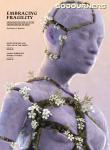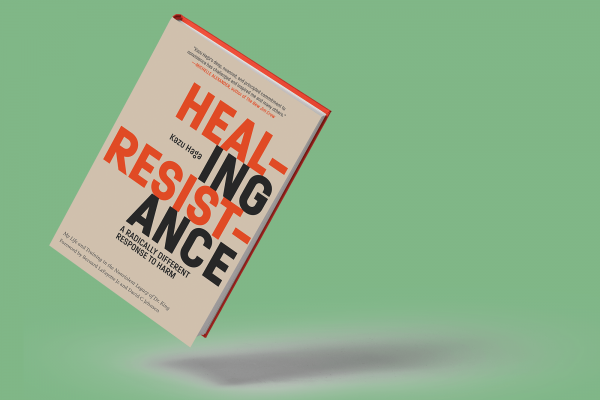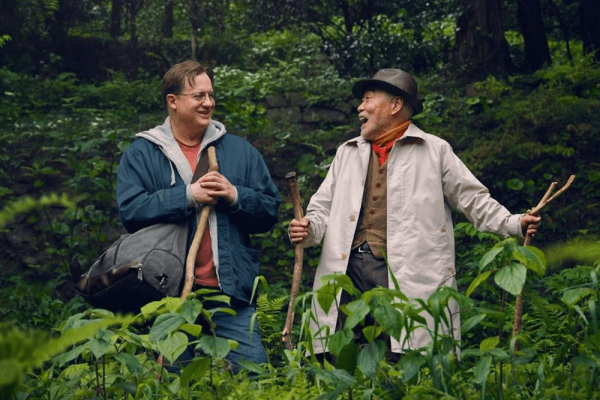NONVIOLENCE. WHEN YOU hear the term, what do you think? In your mind’s eye, what do you see? Black and white newsreels of college students dressed in their Sunday best, picketing segregated businesses? Perhaps you imagine Gandhi’s historic salt march to the sea or Martin Luther King Jr. leading the faithful onto the Edmund Pettus Bridge in Selma.
It’s not uncommon to hear “nonviolence” and think “protest.” There is much value in this association. History demonstrates that nonviolence can be an effective tactic for promoting political change. But in Healing Resistance: A Radically Different Response to Harm, Kazu Haga shows us that it can be much more than a political tool.
Haga—a nonviolence trainer and founder of East Point Peace Academy in Oakland, Calif.—was influenced by the Kingian nonviolence principles and curriculum of Bernard LaFayette Jr. and David C. Jehnsen (who co-wrote this book’s foreword). Haga weaves these principles with lessons from Buddhism, social justice activism, and trauma work, illustrating how we might embrace nonviolence to transform both ourselves and our world.
In a society threaded with violence and injustice, Haga suggests it is not enough to simply resolve to be nonviolent. We must be strategic. We must prepare. We must, as he says, “practice ten thousand ways to turn the other cheek.” This is where Kingian nonviolence as learned and taught by Haga comes in, for it presents nonviolence as both a philosophy and a toolkit.
Haga draws on biographic anecdotes and historic details to convey the great breadth of what nonviolence can be. From direct action employed to highlight systemic inequities to more compassionate ways of disagreeing with those who don’t share our views, in Haga’s interpretation it is as much about rooting out the violence that lives in our own hearts as about making institutional changes that address the realities of structural racism, inequality, and the like.
With this broad vision of nonviolence, Haga brings together social justice activists, whose primary focus is systemic change, and those in the helping professions, who have traditionally concerned themselves more with repairing intra- and interpersonal relationships than remedying social ills.
Though Haga’s book is structured around Kingian nonviolence principles and skills, this vision is larger than any dogma or philosophy. It’s a grand moral vision very much in the lineage of King. As such, it is not bound by the discrete ends of any particular political program. For Haga, nonviolence is a lifelong project of becoming; it is a day-by-day, step-by-step journey toward the Beloved Community, a community committed to personal and social change, where justice reigns and we are all deemed worthy.

Got something to say about what you're reading? We value your feedback!






